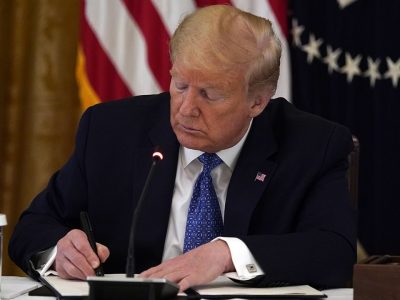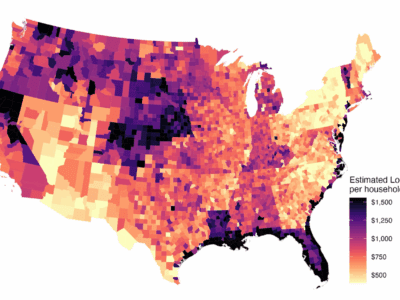Did Democrats Follow Through?
The 2020 Democratic Platform made some big promises. Four years later, where do things stand?
The 2020 Democratic Platform made a lot of promises about climate change. As this year’s Convention approaches, it’s worth looking back at the last one, to compare what was promised and what was actually done. Platforms are often considered so much hot air. That seems a bit less true in this case: the Administration seems to have made efforts in the areas covered in the 2020 Platform, with varying degrees of success. Thus, the energy and climate programs of the two parties continue to offer a sharp contrast.
The biggest criticism has been about fossil fuel production. The platform said the Administration would “support” a ban on new drilling on public lands. If this was meant to signal support for new legislation, that legislation never happened. The Administration hasn’t issued a national ban of its own, to the frustration of some climate advocates. It has, however, issued rules to block new drilling in much of Alaska, and to offshore drilling to three areas in the Gulf of Mexico. Those restrictions are being challenged in court. Whether this glass is half empty or half full depends on your perspective.
International
Paris agreement “ Rejoin the Paris Climate Agreement”. Done.
International funding “Recommitting to the Green Climate Fund” “Restore funding to the Global Environment Facility and the Intergovernmental Panel on Climate Change“ The Administration has recommended substantial funding for these but has been able to get only a fraction of that from Congress.
Super-warming chemicals “Work to ratify the Kigali Amendment to the Montreal Protocol” Done, and implementing legislation passed by Congress.
Green tariffs “Carbon adjustment fee.” Requires new legislation, still in the talking phase in Congress.
Transportation
Railroads. “Launch our country’s second great railroad revolution” through new investments. The Infrastructure Act devotes $66 billion to this.
EVs. “Domestic manufacturing base for electric vehicles.” A huge success, due to the Inflation Reduction Act. For instance, in the first half of 2024 alone, there were over $60 billion in announced investments in manufacturing electric vehicles and EV batteries, for a total of $144 billion since the law was passed.
Charging stations. “Installing 500,000 public charging stations for electric vehicles.” I’m assuming they meant outlets rather than stations. Even so, there seem to be only a third this many outlets in the US today. However, the Infrastructure Act allotted $7.5 billion for chargers, which has not yet been spent. That could do a lot to close the gap.
Clean energy
Tribes “New resources for economic development on Tribal lands, including supporting investments in clean energy.” The Infrastructure Act earmarks $13 billion for tribal communities, and the IRA adds another $700 million, plus eligibility under many grant programs.
Government energy use. “Federal resources and authorities across all agencies to deploy proven clean energy solutions.” A Biden executive order sets ambitious clean energy goals for government buildings, vehicles, and activities. The IRA provides $3.4 billion for clean energy in government buildings.
Rollback reversals “Reverse the Trump Administration’s dangerous and destructive rollbacks “ Done in terms of the most important rules and many of the smaller ones.
New renewables “Within five years, we will install 500 million solar panels, including eight million solar roofs and community solar energy systems, and 60,000 wind turbines.” The Inflation Reduction Act provided billions of dollars in tax credits for renewable energy. Numbers of panels or turbines was a bad metric to pick, because the relevant number — and the one used in all the statistics — is megawatts of generation capacity. Utility-scale solar has expanded exponentially. Wind power has continued to grow, but at a slower pace due to supply chain, siting, and permitting issues. Battery storage, not mentioned in the platform, has grown exponentially.
Building emissions “Achieving net-zero greenhouse gas emissions for all new buildings by 2030.“ It’s not clear whether EPA would have regulatory authority to do this. However, the IRA tax incentives to reduce emissions on new buildings. It also provides several billion dollars in funding to reduce the amount of carbon used in building materials.
Transmission “Build a modern electric grid by investing in interstate transmission.” The Infrastructure Act set up a $2.5 billion revolving fund and expanded the power of federal regulators to overturn state efforts to block projects. The IRA provides about $3 billion more in transmission loans and funding,
Clean transit “Transitioning the entire fleet of 500,000 school buses to American-made, zero-emission alternatives within five years.” This seems wildly ambitious. But the Infrastructure Act made $5 billion available — good down payment which would cover a third to a half of the fleet at current prices. Charging stations for buses are very expensive, however.
Fossil Fuels
Public lands “Support banning new oil and gas permitting on public lands and waters, modifying royalties to account for climate costs” A new rule does modify fees as promised. See the intro for discussion of the ban.
Coal and gas power plants.“Eliminating carbon pollution from power plants by 2035 through technology-neutral standards for clean energy and energy efficiency.” EPA has largely kept this promise for coal-fired plants. Gas plants turned out to be a more difficult problem and EPA is planning further action. EPA has been hampered by Supreme Court limits on its powers.
Methane “We will follow science and the law by reducing harmful methane and carbon pollution from the energy sector.” EPA has issued new rules on methane leaks, and the IRA establishes a fee for excessive emissions.
Environmental Justice
Targeted investments “Target relevant investments with the goal of delivering 40 percent of the overall benefits to disadvantaged and frontline communities.“ Biden issued an executive order directing this.
Energy conservation. “Energy-saving upgrades to up to two million low-income households and affordable and public housing units within five years.” Not clear whether this numbers will. be attained, but the IRA does provide substantial funding and special tax credits for this purpose.
Environmental Justice Screening Tool. “Develop a screening and mapping tool to ensure racial and socioeconomic equity in federal climate, energy, and infrastructure programs and identify areas of high cumulative pollution.” Done. The IRA earmarks over $8 billion for low income communities.
Biden hasn’t been able to achieve 100% of what he promised. On the other hand, none of it would have happened if his 2020 opponent had been reelected.
In fairness, Trump also did his best to keep his 2016 promises about climate and energy. He was unable to get congressional support for radical budget cuts or other legislation, but he rolled back virtually all of Obama’s climate policies.
Thus, despite the notorious unreliability of politician’s promises, climate policy seems to be an exception. What you see is, more or less, what you get.
Reader Comments
2 Replies to “Did Democrats Follow Through?”
Comments are closed.







I understand that is your opinion, but its also supposed to be news – facts that environmental law practitioners can use, cite and rely on. Your article does not cite anything remotely negative, inconsistent or even challenging to or about the Biden / Harris administration, regarding the most important topics in the world and certainly to your readers (environmental law practitioners). I find the lack of nuance or balance troubling, and cuts against credibility or sincerity. We are professionals in this field – if you have details, nuance or additional facts to share, we can take it, I assure you.
Hi Sara — This was meant to be informative for those interested in how actions and promises lined up. This isn’t a law review article so obviously it’s less comprehensive. One of the beauties of having a comment section, however, is that you don’t have to rely on me if you think something’s missing or there’s a lack of balance. Feel free to go on record with the extra material yourself — that’s why the comment space is here.